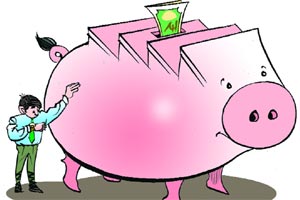A classic confusion that arises frequently in the minds of investors is whether shares of growth companies are really good investments. The shares of a growth company are not necessarily growth shares. Recognition of this difference is absolutely essential for successful investing.
Growth companies
Researchers have historically defined growth companies as those that consistently experience above-average increases in sales and earnings compared to industry peers. This definition has some limitations because many companies could qualify owing to certain accounting procedures, mergers, or other external events.
In contrast, financial theorists define a growth company as one with the management ability and the opportunities to make investments that yield rates of return greater than the company’s required rate of return.
This required rate of return is nothing but the company’s weighted average cost of capital, popularly known as WACC. For instance, a growth company might be able to acquire capital at an average cost of 10% and yet have the management ability and the opportunity to invest those funds at rates of return of 15-20%. As a result of these investment opportunities, the company’s sales and earnings grow faster than those of similar risk companies and the overall economy. In addition, a growth company that has above-average investment opportunities should and, typically does, retain a large portion of its earnings to fund these superior investment projects. This means that these kind of companies generally have low dividend payout ratios.
Growth shares
Growth shares are not necessarily shares in growth companies. A growth share is a share with a higher rate of return than other shares in the market with the similar risk characteristics. The share achieves this superior risk-adjusted rate of return because at some point in time the market undervalued it compared to other stocks. Although the stock market adjusts share prices relatively quickly and accurately to reflect new information, available information is not always perfect or complete. Therefore, imperfect or incomplete information may cause a given share to be undervalued or overvalued at a given point in time.
Assuming that the share is undervalued, its price should eventually increase to reflect its true fundamental value when the correct information becomes available. During this time span of price adjustment, the share’s realised return will exceed the required return for a share with its risk and during this period of adjustment, it will be considered a growth stock.
Growth stocks are not necessarily limited to growth companies. A future growth stock can be the stock of any type of company; it need only be undervalued by the market. The fact is, if investors recognise a growth company and discount its future earnings stream properly, the current market price of the growth company’s stock will reflect its future earnings stream.
Those who acquire the stock of a growth company at this correct market price will receive a rate of return consistent with the risk of the stock, even when the superior earnings growth is attained. In many instances, over-eager investors tend to overestimate the expected growth rate of earnings and cash flows for the growth company and, therefore, inflate its price. Investors who pay the inflated stock price will earn a rate of return below the risk-adjusted required rate of return, despite the fact that the growth company experiences the above-average growth of sales and earnings.
Intrinsic value matters
After analysing a company and deriving an understanding of its strengths and risks, you need to compute the intrinsic value or fundamental value of a company. This intrinsic value needs to to be compared with the market value to decide whether the company shares should be purchased or not. The share of a wonderful company with superior management and strong performance measured by sales and earnings growth can be priced so high that the intrinsic value of the share is below its current market price and should not be acquired.
In contrast, the share of a company with less success based on its sales and earnings growth may have a stock market price, which is below its intrinsic value should be purchased. In this case, although the company is not as good, its stock could be the better investment.
To conclude, while stock-picking, investors need to assess and compare the intrinsic value of the share with that of the prevailing current market price. If the current market price is above the intrinsic value, avoid those shares, else pick them up. Growth shares are not necessarily shares in growth companies.
Growth shares
* A growth share is a share with a higher rate of return than other shares in the market with the similar risk characteristics
* The share achieves this superior risk-adjusted rate of return because at some point in time the market undervalued it compared to other stocks
* Although the stock market adjusts share prices relatively quickly and accurately to reflect new information, available information is not always perfect or complete
* Therefore, imperfect or incomplete information may cause a given share to be undervalued or overvalued at a given point in time
The writer is associate professor of finance and accounting at IIM Shillong


